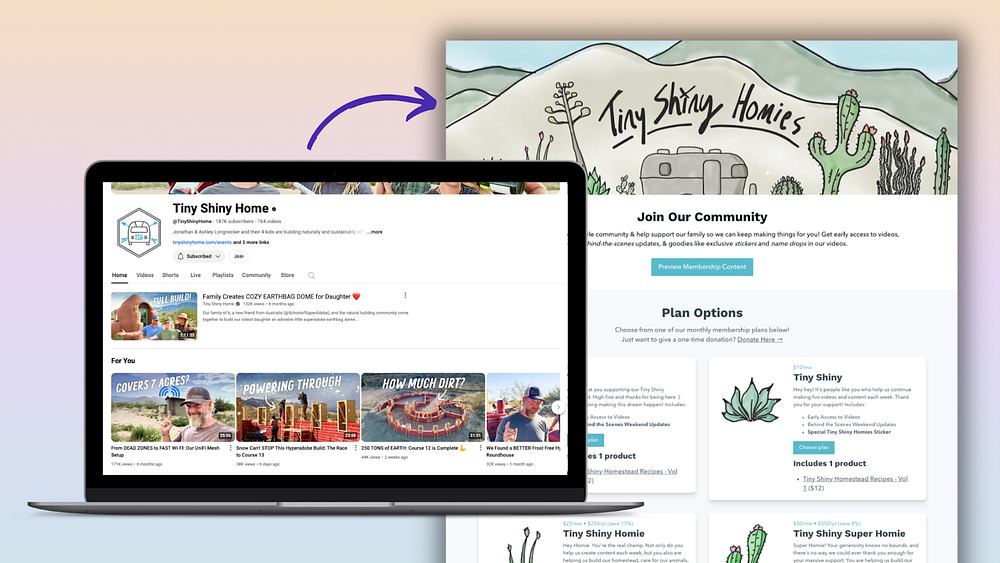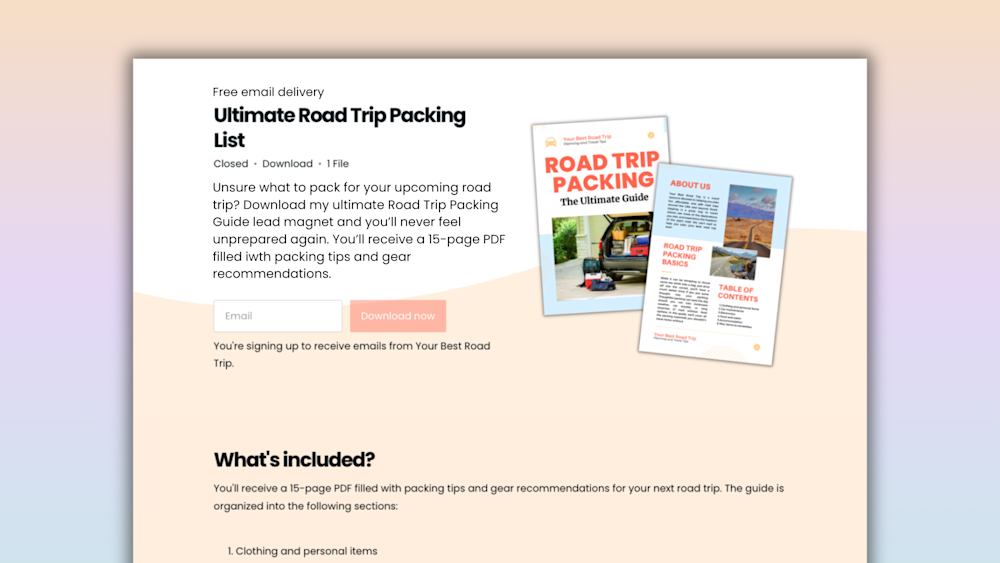Have you ever been to a wholesale store on a Saturday afternoon?
One of my favorite (pre-pandemic) activities is making a meal out of free samples at my local Costco.
On busy days, every aisle seems to have a different sample at the end. It’s a delicious way to get a free meal’s worth of food — and I always seem to come away with a 48-pack of potstickers, a torso-sized bag of popcorn, and a big smile.
Free stuff makes people happy. We’re wired for it.
You can bring that same spark of joy to your audience by giving them free content. Offer up a platter of your most delicious content samples, and before you know it, they’ll be coming back for more — and ready to make a purchase.
In this article, we’ll show you how to turn free content into more sales in just three steps.
But first, let’s dive a little deeper into the strategy behind giving away content for free.
Why give away free content?
Giving away free content works for two reasons:
-
People love free stuff.
-
Content marketing works.
Let’s start with number one. Whether it’s a pizza bagel sample at Costco or a free ebook download, freebies make us happy.
Dan Ariely, a behavioral economist at Duke University, researched the power of free offers for his book, Predictably Irrational. In one study, researchers asked people to choose between a one-cent Hershey Kiss or a 15-cent Lindt truffle (a fancier chocolate).
73% of people chose the Lindt truffle.
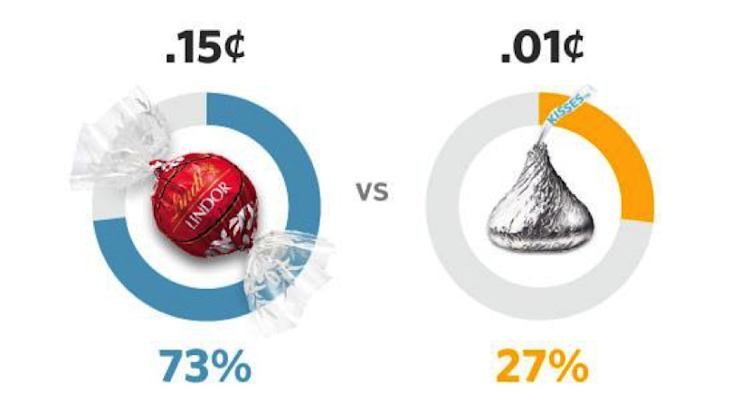
Next, they lowered both prices by a penny, so the Hershey Kiss was free and the Lindt truffle cost 14 cents.
The results of this tiny change?
69% of people chose the Kiss over the truffle.
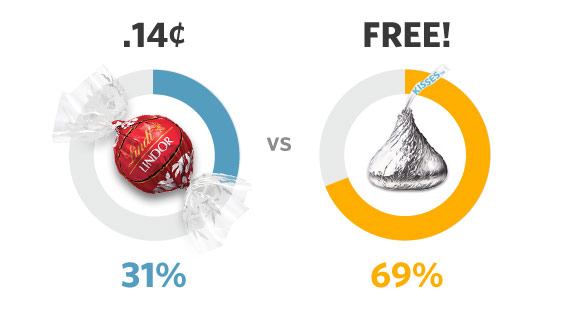
In the second study, the Lindt truffle was still a higher value, but the power of “free” won out.
Here’s why:
Getting something for free makes people happy at a chemical level. “Getting something free gives that good spike of dopamine, one of four hormones that make us feel happy,” says psychologist Dr. Linda Papadopolous.
So, when you give your audience free content, you make them happy. They associate that happiness with your brand — and may even feel like they owe you something in return.
The rule of reciprocity is basic sales psychology: When you give someone something, they’re more likely to return the favor.
Dr. Papadopolous explains: “Savvy brands rely on ‘connection’ with shoppers and use free goodies to make them feel like a friend. Humans are creatures of reciprocity.”
In other words, free content helps you build a relationship with prospective customers. And content marketing can be an affordable and effective way to reach that audience.
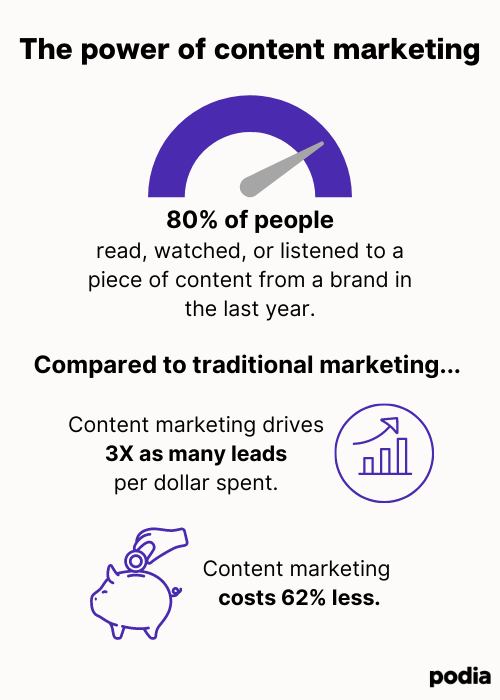
-
80% of people read, watched, or listened to a piece of content from a brand in the last year.
-
Content marketing costs 62% less than and generates more than three times as many leads as traditional marketing.
When you make free content a part of your content marketing strategy, you establish yourself and your brand as an expert in your niche.
You also build an audience of people who are interested in your topic and your unique take on it and bring them into your marketing funnel.
A marketing funnel maps the journey that a potential customer (or “lead”) takes from their first interaction with your business until they make a purchase.
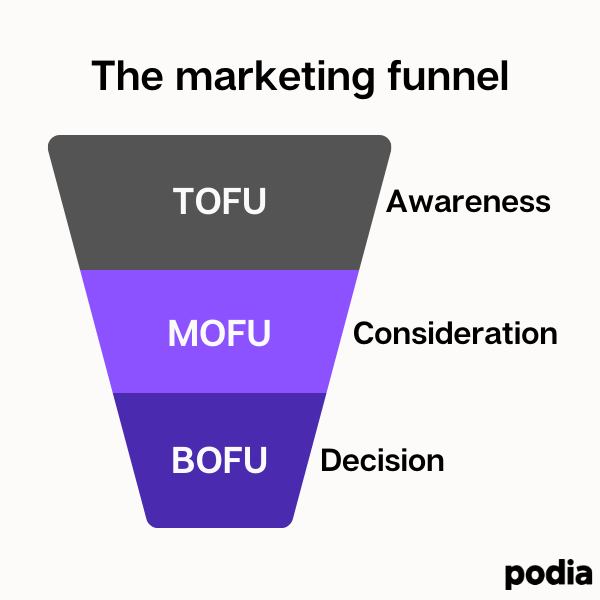
Where someone is in the funnel depends on how familiar they are with your brand and how close they are to making a purchase.
When new people encounter your free content — whether on social media, through a Google search, or via word of mouth — they enter the top of the funnel (TOFU), a.k.a. the awareness stage.
But you can’t just offer up any ol’ content. You need to make your best content free.
I know, it seems counterintuitive not to charge for your top-shelf content. Think of it this way: If you were a candymaker, you wouldn’t want to give out samples of your worst chocolate.
Content is the same way. If your free stuff isn’t delicious (or valuable) at first bite, your audience probably won’t bother with your paid stuff (like courses and workshops).
For example, vegan YouTube star Rose of Cheap Lazy Vegan publishes free advice and recipe videos every week. With that free content, Rose has built a YouTube audience of over 750K subscribers.
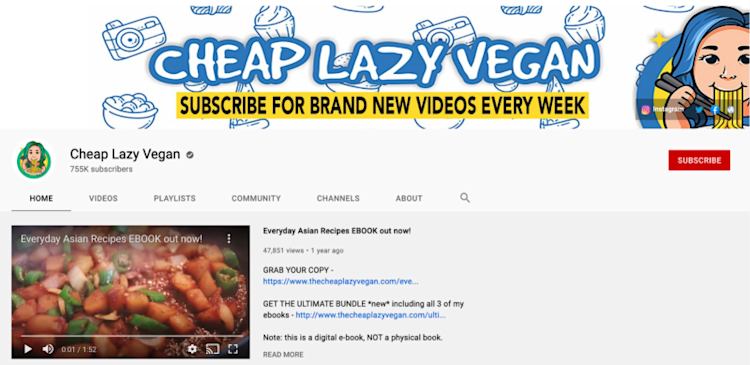
After years of offering high-quality YouTube videos to her subscribers, Rose now also has three ebooks available for sale. Her fans already trust that Rose creates delicious vegan recipes, making it a no-brainer to buy her paid content.
Bottom line:
Whether you write blog articles, publish free videos, or host a weekly podcast, free content builds relationships with your followers, listeners, and viewers. And with the right tactics, you can turn those leads into loyal, happy, and paying customers.
Now that you know the “why”, let’s get into the “how”, with three steps to create free content and boost your sales.
3 steps to turn free content into sales
1. Create once, publish everywhere
The average small business owner wears many hats— but you’re only one person. And you may not have the budget to outsource content creation to a freelancer.
So how do you find the time to create top-notch free content while building an online business?
Use the create once, publish everywhere (COPE) model.
Here’s how this super-scalable system works:
-
Write a blog post
-
Repurpose your blog content for different channels.
To publish a blog post, of course, you need a blog.
Podia includes a blog feature with unlimited posts on all plans, so you can start your blog in the same place as everything else. No coding or extra tools needed.
Your blog posts — like all of your free content — need to provide real value. Create blog content that is related to your products, but make sure they’re not just longform written ads for your online course or membership community site.
For example, if you’re selling an online course on making homemade pasta from scratch, you might consider blogging about the pros and cons of different ravioli fillings.
To make the most of your blog content, make sure to optimize it for SEO, too. SEO can mean the difference between a good blog with just a few readers and an amazing blog bringing in visitors by the thousands.
When you optimize your blog content for search, you make it easier for your target audience to find you when they’re searching for relevant keywords and phrases.
Here are some resources to help you get started with SEO:
-
A guide to DIY your blog SEO on a budget
-
Simple SEO tips, no technical skills required
-
A step-by-step guide to SEO for online course creators
-
A list of 11 free SEO tools for creators
Once you publish your blog post, you can repurpose it into different content formats.
Repurposing content is one of our favorite small business marketing strategies because it’s cost- and time-efficient. Instead of creating content from scratch every time you want to publish something new, you can get more out of your existing content.
For example, you can turn a data-heavy blog post into an infographic. Visuals make content easier for your audience to absorb — and 40% of marketers report that original graphics (including infographics) are the most impactful type of visual content.
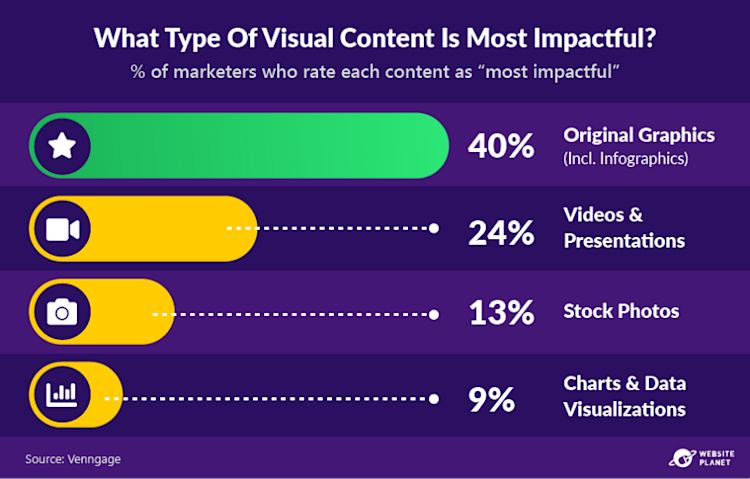
Blogs aren’t the only type of content you can repurpose. Here are some more examples of free content:
-
Crop an infographic into smaller social media graphics to post on Instagram, LinkedIn, and Twitter.
-
Turn a how-to blog post into a script for a video tutorial.
-
Create a series of related blog posts by repurposing an ebook.
-
Turn repurposed video content into audio for a podcast episode.
You can also turn your top blog content into a free digital download, like a guide or checklist, and offer it in exchange for your audience’s email info.
Keep reading to learn how.
2. Collect email addresses in exchange for free content
Once people discover your content, you have the opportunity to guide them through a journey from casual reader to loyal customer.
To do that, you need a way to reach them.
This is where lead generation — a.k.a. building your email list — comes into play. Blog traffic can be a great way to build your email list.
But before you can start sending them emails, subscribers need to sign up to hear from you. Otherwise, you risk landing in the spam folder.
There are two ways you can use free content to collect email signups:
-
Add an opt-in form to your blog.
-
Offer a lead magnet in exchange for their contact info.
An opt-in form (also called a newsletter capture) asks visitors for their email address, usually in exchange for something of value.
Take developer and trainer Reuven Lerner, for example. Reuven uses an opt-in form on his blog to bring in signups for his email newsletter.
“I’ve found that posting to my blog, and then getting blog posts repeated and re-posted by others, and then having an opt-in widget on my blog, is a great way to go,” Reuven told us.
By signing up for the newsletter, subscribers receive — you guessed it — more free content.
The free weekly Python tutorials give Reuven’s audience a preview of his expertise and teaching style. So when it comes time for them to enroll in a Python training course, they know that Reuven’s courses are an excellent choice.
On the flip side, Reuven knows that his email subscribers are interested in taking their Python skills to the next level, and he can confidently market his paid online courses to them.
Lead magnets are another way to collect email addresses by offering valuable content.
A lead magnet is a free resource that people receive in exchange for subscribing to your email list.

People want actionable, informative content in exchange for their contact info.
Types of content that make great lead magnets include:
-
Ebooks and guides
-
Checklists and cheat sheets
-
Case studies
-
Webinar recordings
Like all free content, the best lead magnets are tailored to your specific audience and their pain points. Show potential customers why they should trust and eventually buy from you.
For more lead magnet ideas, check out this guide on how to create a lead magnet of your own in 90 minutes or less.
Alright, you’ve turned your blog visitor into an email subscriber. Next up: Turning email subscribers into customers.
3. Nurture and sell to leads with email marketing
Remember that marketing funnel we talked about earlier?
Now that your blog readers have turned into leads, we’re moving into the middle of the funnel: the consideration stage.
In the consideration stage, prospects know what their problem is, and they know there are multiple options to solve it. Your job is to make them realize that your product is the best option.
It’s time to harness the power of email marketing to nurture your leads.
Thanks to your content marketing, you already know what your subscribers are interested in learning. And when they download a lead magnet, you can share info about products related to that content.
For example, Roxana Radulescu of All Personal Skills Coach offers a free workshop on leadership.

Roxana knows that leads who sign up for the free workshop are good candidates for one of her paid coaching programs on the same topic. She can send them a series of nurture emails encouraging them to enroll.
Ryan of Signature Edits uses email segmentation to take those product recommendations one step further in his lead nurture emails.
Here’s how:
Ryan knows that different photographers run into different pain points, so he offers two lead magnets: a sample of his candid posing guide and a free pack of photo editing presets.
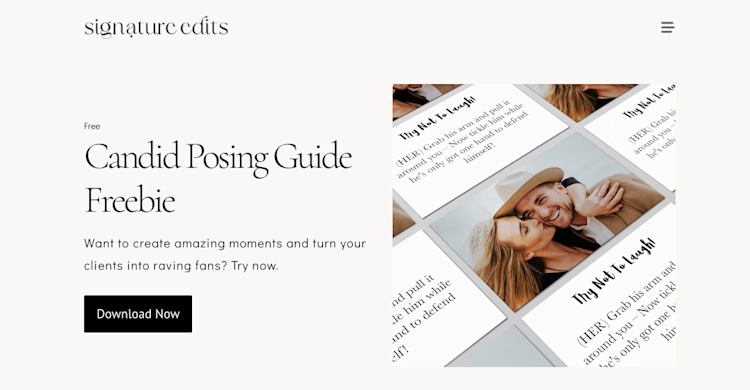
Signature Edits offers presets, templates, and training for photographers. When someone downloads one of the lead magnets, Ryan can send them follow-up emails based on which of the two freebies they download.
For example, if someone signs up for the photo editing presets, Ryan knows that they’re interested in improving their editing skills. With that info in hand, he can confidently promote his editing products to that lead.
(Podia makes it easy for creators like Roxana and Ryan to sell webinars, digital downloads, and more. Get started with a 30-day free trial today.)
When you know your leads’ pain points and interests, you can write a sales email that truly resonates with them — like in this email template:
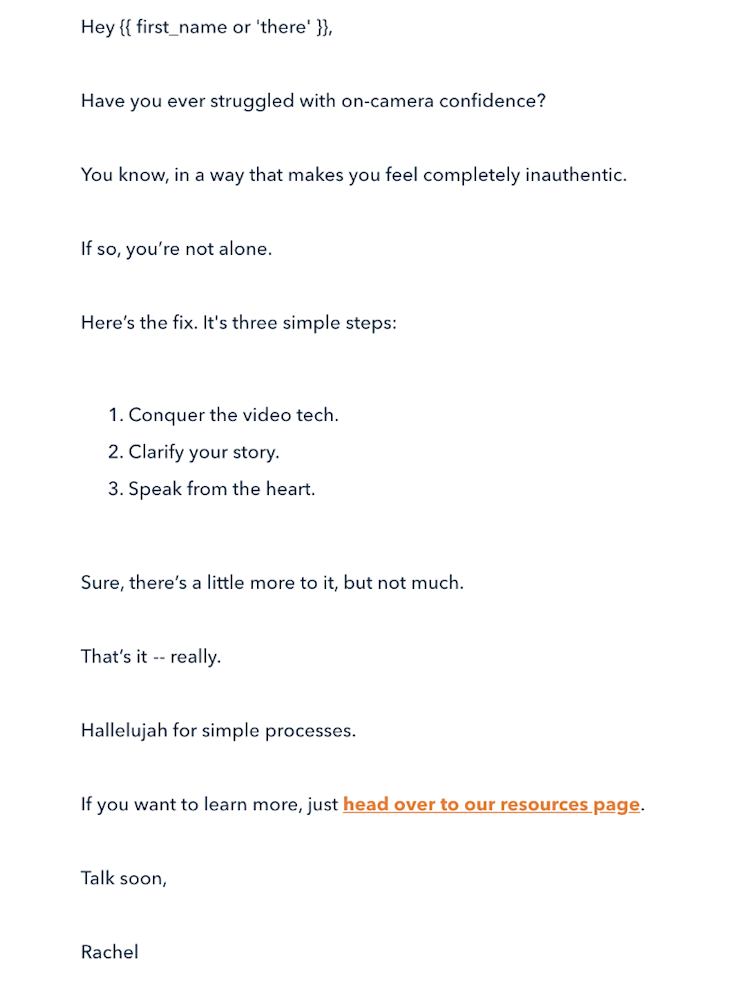
Learn more about lead nurture and turning subscribers into customers in this four-step guide to writing better sales emails. And for more email templates, check out these 14 digital marketing email templates and eight sales email templates.
All in all, your lead nurture emails help potential customers make the decision to move from free content to paid. These emails are an opportunity to build trust, introduce your products, and show your leads how you can help them.
Create free content that’s worth its weight in gold
People love free things, and free content is no exception.
When you give away valuable free content, it makes your audience happy and shows them why they should learn more about you and your products.
You don’t need a team of content marketers or unlimited hours in the day to create top-notch free content that brings in leads. To recap, here are three steps to turning free content into sales:
-
Create once, publish everywhere. Start by writing blog posts that showcase your expertise and point of view, then repurpose your content to reach more people.
-
Use a newsletter opt-in form or lead magnets to collect email addresses from your leads. Offer high-quality, exclusive content in exchange for their contact info.
-
Write nurture emails tailored to your subscribers’ interests and pain points. Introduce your products and make potential customers confident in their purchase decision.
You’re well on your way to creating content your audience will love and watching your sales soar. May free content always be the gift that keeps on giving.
You can offer free content in the same place as the rest of your business with Podia. Create your blog, offer free and paid products, build your email list, and stay in touch with your audience -- all under one roof. Get your 30-day free trial today.
